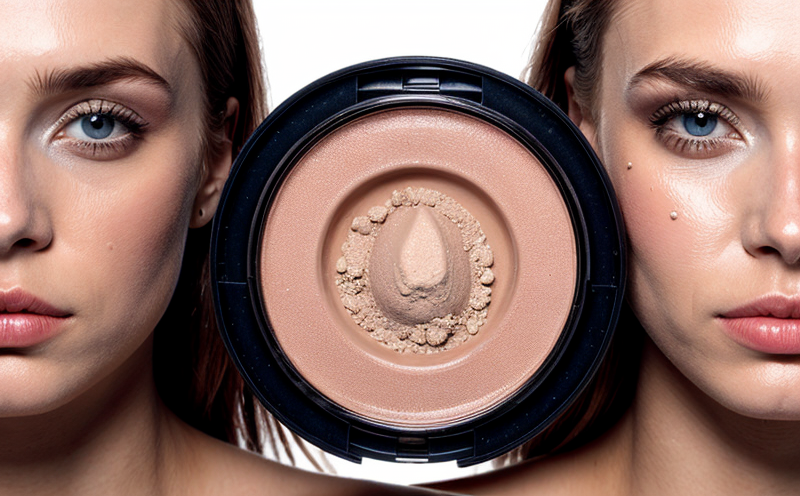Tin Content Testing in Cosmetic Ingredients
In the realm of cosmetics testing, ensuring product safety and quality is paramount. Tin content testing plays a crucial role in this process by identifying and quantifying tin levels within cosmetic ingredients. This service focuses on detecting tin in various cosmetic formulations to ensure compliance with international standards.
Testing for tin content in cosmetic ingredients is essential because tin can be present as an impurity or intentionally added as a preservative, stabilizer, or colorant. Excessive levels of tin may lead to adverse effects on the skin and overall health. Therefore, laboratories like Eurolab provide comprehensive testing services to ensure that cosmetic products meet regulatory requirements.
The process involves several steps: sample preparation, analysis using advanced analytical techniques such as Inductively Coupled Plasma Mass Spectrometry (ICP-MS), and result interpretation. Sample preparation is critical for accurate measurement; it includes homogenization of the sample, digestion if necessary, and dilution to appropriate concentrations.
Once prepared, samples are analyzed using ICP-MS, which offers high sensitivity and precision. This method allows for detection limits down to parts per billion (ppb), making it suitable for quantifying tin in cosmetic ingredients accurately. After analysis, results are reported according to international standards such as ISO 17025, ensuring accuracy and reliability.
Compliance with regulations is essential; hence, Eurolab adheres strictly to guidelines set forth by organizations like the European Union Cosmetics Regulation (EC 1223/2009) and the US Food and Drug Administration (FDA). These standards dictate permissible levels of tin in cosmetics, ensuring consumer safety.
Our team of experts ensures that every aspect of this testing process is conducted rigorously. From sample preparation to final reporting, we employ state-of-the-art equipment and methodologies to deliver precise results. By partnering with Eurolab for your tin content testing needs, you can rest assured knowing that your products meet the highest safety standards.
Understanding the importance of this testing extends beyond mere compliance; it also enhances consumer trust in brands committed to producing safe cosmetics. With our expertise and commitment to quality, we provide peace of mind for both manufacturers and consumers alike.
Industry Applications
- Quality Control: Ensuring consistent product quality by monitoring tin content levels.
- Regulatory Compliance: Meeting stringent regulatory requirements for cosmetic products.
- R&D Support: Identifying potential issues early in the development process to improve formulations.
Eurolab Advantages
EuroLab stands out as a premier provider of tin content testing services for cosmetic ingredients. Our dedicated team leverages cutting-edge technology and stringent quality control measures to ensure accurate and reliable results.
Our advanced analytical techniques, including ICP-MS, provide high sensitivity and precision necessary for detecting trace amounts of tin in cosmetics. This ensures that even the smallest impurities are accurately measured. Additionally, our adherence to international standards like ISO 17025 guarantees that all tests meet the highest scientific and technical quality.
Our commitment to excellence extends beyond just technology; we offer personalized service tailored to each client’s unique needs. Whether you require regular testing or one-off analysis, our team works closely with you to understand your specific requirements and deliver solutions accordingly.
Use Cases and Application Examples
Tin content testing is critical in several scenarios within the cosmetic industry:
- New Product Launches: Ensuring tin levels comply with regulatory standards before market release.
- Supplier Audits: Verifying that raw materials meet specified tin content limits.
- Batch Testing: Monitoring tin content in batches during production to maintain consistent quality.
For instance, when launching a new lipstick formula, it is crucial to test for tin content early on. Any excess could indicate contamination or unintended addition of tin compounds. By conducting thorough testing at this stage, potential issues can be addressed promptly, ensuring the final product meets all safety and quality criteria.
Suppliers are also required to provide evidence of tin content compliance as part of their audit process. This helps manufacturers verify that they source materials from reputable suppliers who adhere to strict quality standards.
Beyond these examples, batch testing during production ensures continuous monitoring of tin content levels. This proactive approach allows for immediate correction if any deviations are detected, maintaining consistent product quality throughout the manufacturing cycle.





